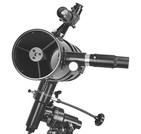In order to see the details of tiny objects or objects, it is necessary to move the object closer to the eye, which can increase the angle of view and form a larger real image on the retina. But when the object is too close to the eye, it is impossible to see clearly. In other words, to be clear, not only should the object have a large enough angle to the eye, but also the appropriate distance. Obviously, for the eye, these two requirements are mutually restrictive, and a convex lens in front of the eye can solve this problem. A convex lens is a simple magnifying glass that helps the eye see tiny objects or details.
Now take the convex lens as an example to calculate its magnification ability. The object PQ is placed between the object focal point of lens L and the lens and placed close to the focal point, so that the object is magnified through the lens into a magnified virtual image P′Q′. If the focal length of the image square of the convex lens is 10cm, the magnifying power of the magnifying glass made of the lens is 2.5 times, written as 2.5 ×. If you only consider it from the perspective of magnification ability, the focal length should be shorter, and it seems that this can get arbitrarily large magnification ability. However, due to the existence of aberrations, the amplification ability generally used is about 3×. If a compound magnifying glass (such as an eyepiece) is used, aberrations can be reduced and magnification can be achieved to 20 ×.
Magnifying glass mounted on the focus hood of a dual-lens reflex camera. Easy to copy or microscope photography when precise focus is required. When used with a single-lens reflex camera, it is mounted on an eyepiece.




